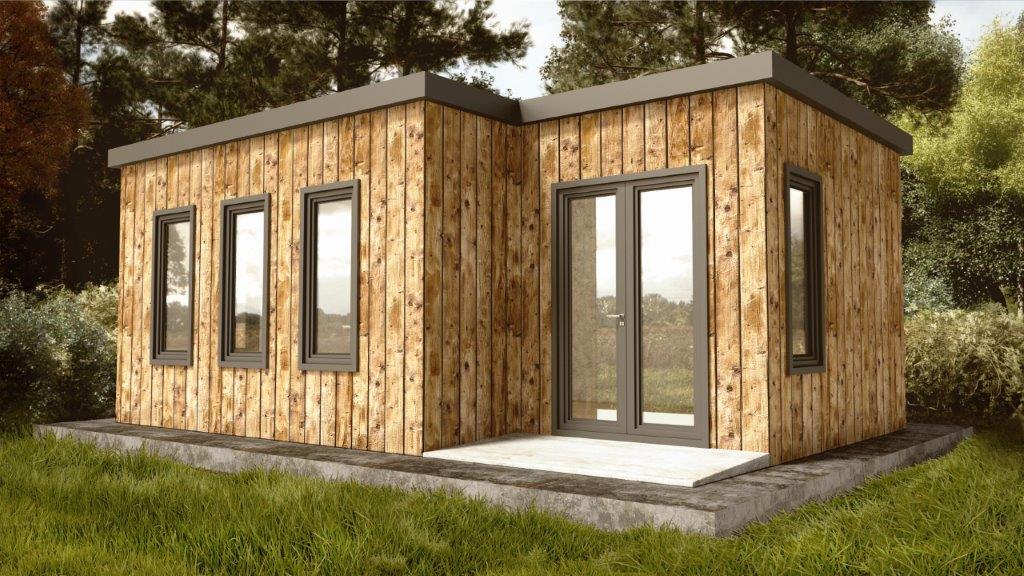
This tiny backyard home provides all of the essentials and conveniences for loved ones to live near their adult children but have fewer worries about maintaining their own separate residence
People want to age in place
People have a strong desire to age in place. Numerous surveys have confirmed this, with an overwhelmingly positive response in this direction. Depending on which source you reference, more than two-thirds to over nine-in-ten people want to remain living in their present home for the duration.
There are many emotional, psychological, and practical explanations for this. Plus, it easier remaining where we are than making adjustments to a new type of dwelling.
However, living alone away from family sometimes can be stressful, but there is a solution. Why not live in the backyard or in the extra suite of an adult son or daughter?
The ADU
The auxiliary or accessory dwelling unit (“ADU”) has existed in many forms for years, but it is gaining a renewed interest. Some people refer to them as granny-flats, granny-pods, in-law quarters or suites, backyard cottages, or other names. They may be free-standing or attached to the main home.
The concept is straightforward. They have a similarity in appearance, size, usage, and layout to the tiny home.
Over the years, adult children have been taking their parents (often the surviving mother or father) into their home to allow them to live out their lives with their family. They have had their own bedroom and used the rest of the home as any other member of the family would.
Along the way. an entire parent’s suite was created with a separate wing or area of the home devoted to a sitting area, secondary kitchen, full bathroom, bedroom, and separate entrance from the outside.
Detached versus attached
While the earliest applications of the ADU concept involved remodeling or reconfiguring a home to allow a separate, designated living area for parents (or in-laws) within the home, newer applications of this concept have the parents living in a separate, detached home on property close to the main home.
Living in a designated suite or set of rooms in the main dwelling is a great option for people who have the space to accommodate this, but not everyone does. Enter the detached ADU.
The separate ADU is a small dwelling of up to 400 square feet typically (smaller or larger as well) that has four essential functions. It provides a sitting area, a sleeping area (which can be in the same space as the sitting area), a full bathroom, and a small kitchen area for light meals and snacks. Other functions such as laundry might be desirable but really are unnecessary since the main home is so close.
The benefit of closeness
There are several benefits of having the ADU in the backyard so close to the main dwelling. For one, there is no need to duplicate or replicate the main features of the home which are provided much better there – a full kitchen, pantry, storage closet for foodstuffs and cleaning supplies, the dining room, TV and media area, and laundry.
For a second, the adult children in the main home can visually maintain contact with their parents or in-laws in the ADU to notice if there is activity in the morning, if the lights are turned on or off, and if the curtains are opened.
For a third, the parents can visit during approved visitation hours (setting rules is important for both the main home and the ADU for general privacy) and interact with their adult children and any grandchildren. When grandchildren are present, this is a fantastic way to instill intergenerational bonding and education. In many families today, people have lost identity with family members that came before them.
ADUs work
ADUs have a place for people who can’t or don’t want to maintain their own residence and age in place there, or for people whose adult children want them to be located physically closer to them without necessarily being part of the household.
For whatever reason people might want to have an ADU (or set of rooms for their parents to live with them – even if it’s in the finished basement, attic, or second floor, as long as those spaces are accessible for the parents), they are proving to be a valid concept for bringing two or more generations together with each one having their own dedicated space rather than just a bedroom within the home.
They are good alternatives to facility care and keep people together as everyone ages in place in proximity to each other.
